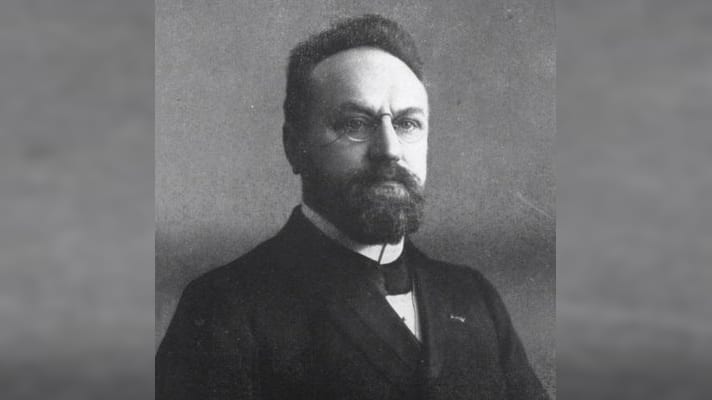Bavinck: A Critical Biography

Reformed Faith & Practice is the online journal of Reformed Theological Seminary. You can browse five years of of the journal online or download each individual issue as a PDF.
In the latest issue you will find a reflection on Eugene Peterson’s pastoral theology, a sermon on Numbers 6:22-27, an argument for restricting the ordained office of deacon to qualified men, several other articles, and a number of book reviews.
Included among the latter is my review of James Eglinton’s new biography of Herman Bavinck. With permission, I’ve pasted that review below.
*****
James Eglinton, Bavinck: A Critical Biography (Grand Rapids, MI: Baker Academic, 2020). Cloth. $44.99. xxii, 450pp.
Over the past decade, there has been a growing tide of English language Bavinck dissertations and Bavinck-inspired theologizing, but there has not been a corresponding scholarly account of Bavinck’s life—until now. Making impressive use of Dutch language newspapers of the period, as well as Bavinck’s own journals (dagboeken), James Eglinton, the Meldrum Senior Lecturer in Reformed Theology at the University of Edinburgh, has managed to write an academic biography that is at learned and nuanced as well as fresh and insightful.
Central to Eglinton’s thesis is his argument against the old historiography that saw “two Bavincks”—the conservative Calvinist and the apparent modernist—forming opposite poles in one man. Building on his earlier work, Trinity and Organism (T&T Clark, 2012), Eglinton insists that far from being a schizophrenic theologian holding contrary opinions, Bavinck was a creative thinker who sought to articulate the historic Christian faith in a newly modern world. “My biography has a particular aim,” Eglinton writes, “to tell the story of a man whose theologically laced personal narrative explored the possibility of an orthodox life in a changing world” (xx).
Eglinton’s biography has been widely praised since its release in September, and with good reason. The book is meaty—with well over a hundred pages of end notes and bibliography—but the narrative itself wastes no words and is only 300 pages. Eglinton’s approach is critical (in the academic sense), but never unsympathetic to Bavinck as a man and as a Christian. There are enough personal vignettes to keep the casual reader interested (e.g., Bavinck’s unrequited romantic affections over many years for Amelia den Dekker), but the text never plods along as a mere chronicle of daily life.
I especially appreciated the Appendix, “My Journey to America,” where Bavinck applauded the youth and energy of late nineteenth-century America but also critiqued its superficial religious life. Among his other observations, Bavinck noted that “there are few handsome men, but more and more beautiful women” (308), that Orange City surpassed Pella and Holland as an enclave of religious piety (303), and that the pillows were bad (307). In a surprising final remark, Bavinck predicted that there was little future for Calvinism in America, but allowed that Calvinism was not the only truth and that American Christianity should chart its own path (314).
Several features of the book’s design are noteworthy. I was helped by the “Chronology” page at the front of the book and by the section highlighting “Key Figures, Churches, Educational Institutions, and Newspapers” in the back. The 39 plates of photographs in the middle of the book were tremendous, and the original artwork by theologian Oliver Crisp makes for an attractive cover. It’s hard to find much to complain about in the book, but I would have benefited from a Bavinck family tree, and some readers may come to the book expecting more intellectual history (though, personally, I was glad Eglinton stuck to biography more than the theological exploration).
Of all the important lessons in this outstanding biography, the most important may be the most obvious: Herman Bavinck was a real person. Writing to his friend Snouck Hurgonje who asked whether Bavinck had been able to keep up with his scholarly pursuits, the 26 year-old new pastor remarked, “If you think for a moment that I must preach twice on Sunday, teach the catechism four times through the week, must also devote much time to visiting homes and the sick, and then sometimes have to lead a Frisian funeral, you won’t have to ask further whether any time or opportunity remains for my own study” (121).
Bavinck was not only swamped with ministerial duties at the outset of his short pastorate in Franecker (1881-82), he was also single, lonely, and spiritually depleted. “The most difficult part of my work,” Bavinck wrote in the same letter to Hurgonje, “is always to lift myself up to, and to stay at, the ideal level in my faith and confession.” Bavinck worried that a shallow, insincere heart might take shape beneath the guise of spiritual depth. He felt pressure to always be the minister, and without a wife he struggled to find “anyone here with whom I can (or might dare to) enjoy” the “familiarity” of friendship (121). Here is a man honest about ministry and honest about himself.
Since the English translation of his four-volume Reformed Dogmatics appeared in 2008, Bavinck has become a treasured companion and authoritative guide for Calvinist theologians, students, and pastors throughout the English-speaking world. And yet, for many, I imagine Bavinck the person has been virtually invisible, swallowed up by the heft of Bavinck’s brain sitting on our shelves. Almost every Reformed pastor knows something about Luther’s courage at Worms or Calvin’s reforms at Geneva or Whitefield’s role in the Great Awakening. But without any commensurate knowledge in Dutch history of the nineteenth and early twentieth centuries, Bavinck can be too quickly reduced to disembodied ideas on a page. This would be a shame, for the story of Bavinck’s life is interesting and instructive in its own right. Herman Bavinck lived a remarkable life as a dogmatician, an ethicist, an educational reformer, a politician, a journalist, a Bible translator, a champion for women’s education, and eventually the father, father-in-law, and grandfather of heroes and martyrs in the anti-Nazi resistance movement (291). This is the story Eglinton tells, and he tells it very well.



